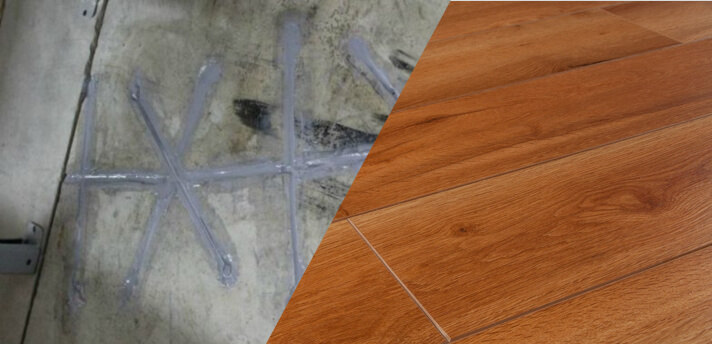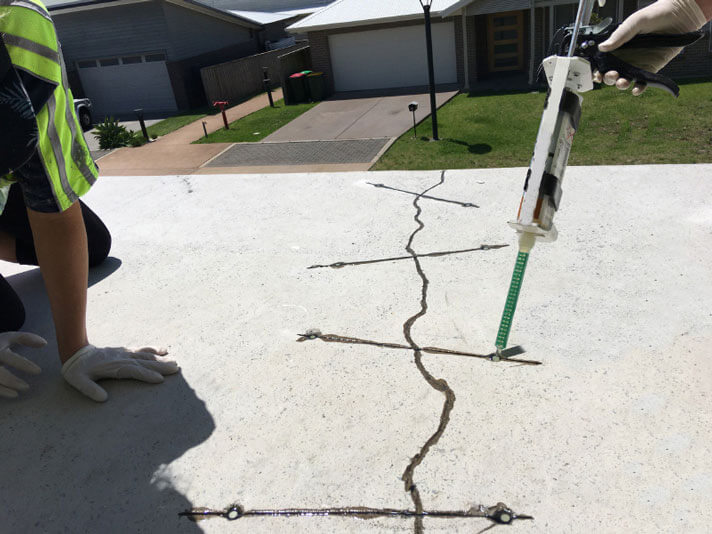Whether it’s roads, bridges, sidewalks, or buildings – concrete is the backbone of your infrastructure. While concrete is known for its durability and resilience, even the most robust material is not immune to wear and tear. Over time, cracks can develop due to various reasons.
Causes for Concrete Cracking
Cracks can result as part of the natural drying and curing process of freshly poured concrete. As water evaporates, the concrete shrinks, leading to small, fine cracks on the surface. Though generally superficial and not major, they may negatively impact the aesthetic look of your construction.
Likewise, hairline cracks can develop while concrete is settling during the curing process. These cracks can run deep into the concrete slab, posing a more serious risk once the concrete hardens. Especially in colder climates, repeated freeze-thaw cycles can widen these cracks over time.
The most serious cracks, however, can appear due to overloading the concrete such as with high-volume traffic or heavy machinery, as well as weather conditions. Concrete contracts and expands with changes in moisture and temperature, potentially leading to tensile stress that results in cracking.
If left unattended, any of these cracks can lead to significant problems that will also become more cost-intensive to fix over time. That’s where concrete crack fillers come into play. They are not just cosmetic solutions; they are essential for maintaining the integrity of your concrete constructions.
Benefits of Concrete Crack Filler
Whether patching up your driveway or repairing a commercial floor, concrete crack fillers have several benefits ranging from protecting your investment to enhancing safety and contributing to sustainable construction practices.
Prevent further damage
Cracks in concrete may appear small initially, but they do encourage rainwater, snowmelt, and groundwater to seep into these cracks, causing internal damage. When water freezes, it expands, putting pressure on the surrounding concrete. This freeze-thaw cycle widens cracks over time, leading to more extensive damage. By using crack fillers, a barrier can be created that prevents water, moisture and other substances from penetrating deeper into the concrete, significantly extending the lifespan of your structure.
Improve thermal performance
Concrete crack fillers can act as natural insulation, helping regulate indoor temperatures and improve energy efficiency in buildings. Not only do they create an airtight seal that prevents air leakage, a significant factor in heat loss and gain in buildings. Filling cracks also reduces so-called thermal bridging, meaning that heat cannot pass through the concrete as easily as it would through cracks.
Enhance aesthetics
Whether it’s your driveway, patio, or commercial parking lot, visible cracks diminish the overall appearance. Applying a high-quality crack filler not only seals the gaps but also restores the surface’s smoothness, improving the overall appearance of your concrete. An unblemished structure will leave a positive impression on visitors and customers alike.
Enhance strength and stability
Cracks weaken the structural integrity of concrete, especially in load-bearing structures such as bridges, columns, and beams. Over time, these weakened structures become safety hazards. By promptly filling cracks, further deterioration can be prevented, and the original strength of the concrete maintained. This is crucial for safety and longevity. Crack fillers also increase the stiffness of the concrete, contributing to its overall stability.
Cost-effective solution
Ignoring cracks can be costly in the long run. Small cracks are relatively easy and inexpensive to repair. However, if left unattended, they can expand, requiring more extensive repairs or even complete replacement. Investing in concrete crack fillers early on saves money by preventing major repairs down the line.
Environmental protection
Concrete crack fillers not only protect your investment but also contribute to environmental conservation. By sealing cracks, you prevent water from seeping into the soil beneath the structure, reducing the risk of soil erosion and contamination. Additionally, crack fillers minimize the need for resource-intensive concrete replacement, which has a significant environmental footprint.










